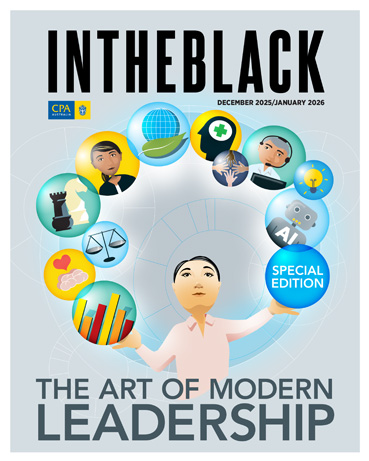Loading component...
At a glance
- The amorphous global wellness economy is booming, with a market size reportedly outstripping the sports and green economies.
- Uptake of wellness coincides with health systems feeling the weight of ageing populations, while technology is a big enabler.
- Wellness businesses and social media influencers face rising demand for scientific or clinical proof points.
Wellness is an unmissable force in the global economy. It is larger in market size than the green economy, IT, sports and pharmaceuticals, reports The Global Wellness Institute (GWI).
Measuring it is complicated because it overlaps with or encompasses 11 sectors: traditional and complementary medicine; public health, prevention and personalised medicine; healthy eating, nutrition and weight loss; physical activity; personal care and beauty; mental wellness; wellness tourism; wellness real estate; workplace wellness; thermal and mineral springs, and spas.
The GWI calculated the global wellness sector’s worth at US$6.3 trillion in 2023, representing 6.03 per cent of global GDP, with growth projections at US$8.9 trillion to 2028.
The growth of the wellness sector is powered by many drivers, including the inexorable rise of digitisation and digital health, and social media — particularly Instagram — with its never-ending supply of wellness influencers.
However, at the forefront of many minds is the global pandemic, which effectively shut down parts of the wellness sector before most bounced back stronger than ever.
Add to this the quest for longevity in ageing populations and the need to control health spending, and the upshot is a highly complex landscape.
The aim is true
Definitions of “wellness” vary. The GWI describes it as “the active pursuit of activities, choices and lifestyles that lead to a state of holistic health,” while the key characteristic of wellness is often its individualistic pursuit.
Whether sipping green juice, hitting the gym, spending time in hyperbaric chambers or booking the latest wellness cruise, the motivation for embracing wellness typically leans into the desire for personal optimisation, prevention or “being one’s best self”.
Regardless of the why, the ideal result of wellness activities is positive health outcomes, which is a good thing for overstretched healthcare sectors.
"The traditional break–fix model in a health system deeply grounded in treating the unwell is not sustainable."
Sabine Bennett, Deloitte Australia’s digital health leader, finds her client conversations increasingly shifting to illness prevention and wellness.
“The traditional break–fix model in a health system deeply grounded in treating the unwell, is not sustainable,” she points out. Among the system’s numerous challenges are rising chronic disease and costs, infrastructure deficits, equity and accessibility.
Bennett notes that while innovations such as virtual care and digital heath solutions play a crucial role in improving the health system and population health, “the most impactful approach is to avoid illness altogether”.
As complex as that is, “shifting focus toward proactive health measures is essential,” she says.
“A new generation of consumers is increasingly invested in their own health and wellbeing, actively searching for new wellness solutions,” reports Bennett, noting she sees private health insurers leading the way.
The public sector is also waking up to the idea. The Government of Singapore, for example, has a mobile app encouraging citizens towards healthy habits through curated health quests.
6 things we get wrong about self-care
Tech is key
Some aspects of wellness are grounded in ancient practices, but new technologies are key enablers. Big brands such as Apple, Samsung, Google and Garmin are heavily invested, putting wellness at the fingertips of consumers with smartphones, watches and rings that allow wellness seekers to collect their data.
Bennett believes that technology benefits all areas of wellness, from access to information and sharing to simplifying the process of finding and booking relevant providers. “Gamification and ‘nudging techniques’ are also being used to help people stay motivated to achieve their goals,” she notes.
The rise of generative artificial intelligence (AI) is not only providing easier access to information, but also what could appear as “personal advice”, Bennett says.
She challenges all users to assess whether the source is reputable or whether to consult a medical professional.
Activation spaces
Wellness real estate is the fastest growing wellness sector, with a predicted growth rate of 15.8 per cent annually from 2023 to 2028, reports the GWI.
Su-Fern Tan, head of ESG for the Pacific region at CBRE — one of the world’s largest commercial real estate services and investment firms — says commercial property landlords are luring premium tenants with wellness features. Additionally, the rise in focus on the social element of ESG is playing to investor appetites and fuelling tenant demand, she says.
“What constitutes a good investment is a building that takes care of its own people and the community that surrounds it. Vacancies are much lower when real estate comes with fantastic wellness facilities — and the rental yields can be higher.” Plus, there is research stating that increased workplace wellness correlates to better productivity.
"Women also are a receptive target audience, because their health concerns are often dismissed in formal health systems. They feel unheard."
Wellness real estate today, however, is less about meditation rooms and exercise spaces and more about amenities and how buildings make people feel, Tan says. “Especially since we spend 90 per cent of our time indoors.”
While there is an obligatory aspect to occupants’ comfort — demanding temperature control, good lighting, acoustics and air quality — these days, wellness is in the “activation” within the building and its environs, Tan says.
Fully funded fitness classes, farmers markets and healthy cafes are likely inclusions, and Sydney’s Barangaroo precinct development offers an outstanding example.
Tourism's new vitality
In the dynamic global tourism sector, COVID-19 significantly moved the dial in terms of people valuing their wellbeing, confirms Katherine Droga, chair of the GWI’s Wellness Tourism Initiative.
“Stress and mental wellbeing are key drivers of consumer demand for time out, a way to unplug or to get into nature,” Droga says. A larger population focusing on wellbeing has prompted growing numbers to seek out wellness trips or experiences.
By far the largest segment of wellness tourism, representing 85 per cent of trips and spend, is the market where travellers intentionally add wellness experiences to trips or holidays. “It shows wellness is growing from a narrow or niche segment to many of us embracing it,” Droga points out.
Mainstream tourists across the globe are open to trying once-niche wellness activities, whether it’s forest bathing or a cacao ceremony, she reports. This is good news for hotels and other accommodation providers who are seizing opportunities to add wellness elements and grow their businesses.
Different countries have varying wellness tourism propositions, but global demand is high for sauna and bathing rituals, where experiences include ice-cold, thermal hot or mineral springs in a communal or solo setting.
Australia is ranked the 11th biggest wellness economy in GWI’s latest data.
Droga is watching the upswing of interest in scientific evidence such as genetic testing, monitoring gut microbiome and longevity retreats that “hack your body for futureproofing” with curiosity.
This trend is surfacing across Europe, Asia and to some extent in Australia, where “people are using scientific insights with natural holistic remedies to balance their wellness travel experiences”.
Mindfulness techniques to reduce your work stress
Move over gurus
Wellness hits trouble worldwide in its credibility gap, with growing calls for scientific proof of its benefits.
The ongoing rise of self-proclaimed “wellness gurus” on social media sometimes spreading misinformation and, in some instances promoting potentially harmful advice, is not helping.
Bennett says clients are looking for clinically proven wellness benefits — features that are equally “extremely important and extremely difficult [to ascertain]”, she insists.
Deloitte clients are taking a critical approach to their investments, as “they want to invest in solutions that make an impact and are backed by evidence,” she says. “The challenge is that there is often not enough [wellness] data to create a clear link to health outcomes. More work needs to be done in this space.”
Dr Nadia Zainuddin, behaviour and social change researcher and University of Wollongong senior lecturer, has been studying the wellness space for almost two decades. Broadly speaking, she notes that “the market isn’t regulated in any way, and there’s no oversight compared to population-level health programs.
“Some providers might engage with the evidence of how their products and services can improve wellbeing, but from a marketing perspective, it’s often all about positioning.”
Women and the wellness agenda
The internet’s democratisation of information combined with the rampant rise of social media plays to both sides of the wellness sector’s credibility issue, Zainuddin believes.
Social media is filled with freely disseminated and unsupported claims about wellness — frequently via “brand ambassadors and influencers with a profile, a platform and lots of followers” but usually without verified expertise, she says. Concurrently, “consumers have become more discerning about the products and services they choose to buy,” she adds.
Women are a major target for wellness marketers. Zainuddin cites several reasons why. “First, women are more proactive about managing their wellbeing and self-care as they age, getting health checks, watching what they put in their bodies, compared to men.
“Women also are a receptive target audience, because their health concerns are often dismissed in formal health systems. They feel unheard,” she says. “The wellness industry has spotted that gap and capitalised on it for its growth and success.”
Since Zainuddin has been studying it, wellness has shifted beyond the maintenance of good health to its enhancement. “For a lot of people now, it’s about how they can get to the next level,” she observes. One of the outstanding shifts she has seen is the focus on mental health.
Boosting inclusiveness is vital for the wellness industry, which to date has substantially targeted wealthy people.
Zainuddin sees an opportunity for wellness businesses to proactively rethink their models to balance profit with social benefit, “prioritising people over profit by integrating social impact into their core operations and making products available to a wider range of audiences”.
Whether the lure is the rhetoric or the results, getting the wellness sector in good shape is a universally worthwhile goal.
Health check on workplace wellness
Harvard Business School lecturer Ashley Whillans and industry specialists Jazz Croft and Acacia Parks argue that corporate wellness is a hotly debated space dominated by easy-to-deploy solutions like meditation apps, chatbots and online therapy.
Research shows such measures are not enough, with nearly 85 per cent of US employers offering wellness programs, yet burnout and mental health issues continue to escalate.
An individually focused approach, such as said wellbeing apps, often fails to address systemic issues, the authors claim, and can result in “carewashing” or “superficial care initiatives that workers may perceive as failing to tackle root causes”.
Initiatives that do not address root causes, such as excessive stress due to a demanding workload, may leave employees feeling more disengaged and in poorer mental health.
Instead, a shift to “broader systemic interventions, such as workload management and mental health development training for leaders” is required.
Among suggested solutions are addressing work–life balance and flexibility, developing employee mental health champions that support wider teams and provide feedback to decision-makers, and adding c-suite leaders such as chief wellness officers and chief happiness officers.

